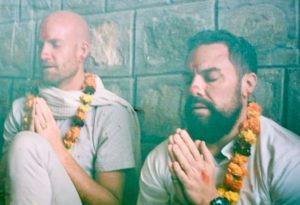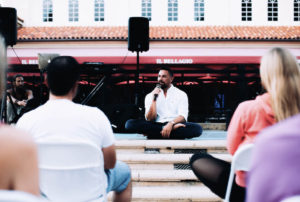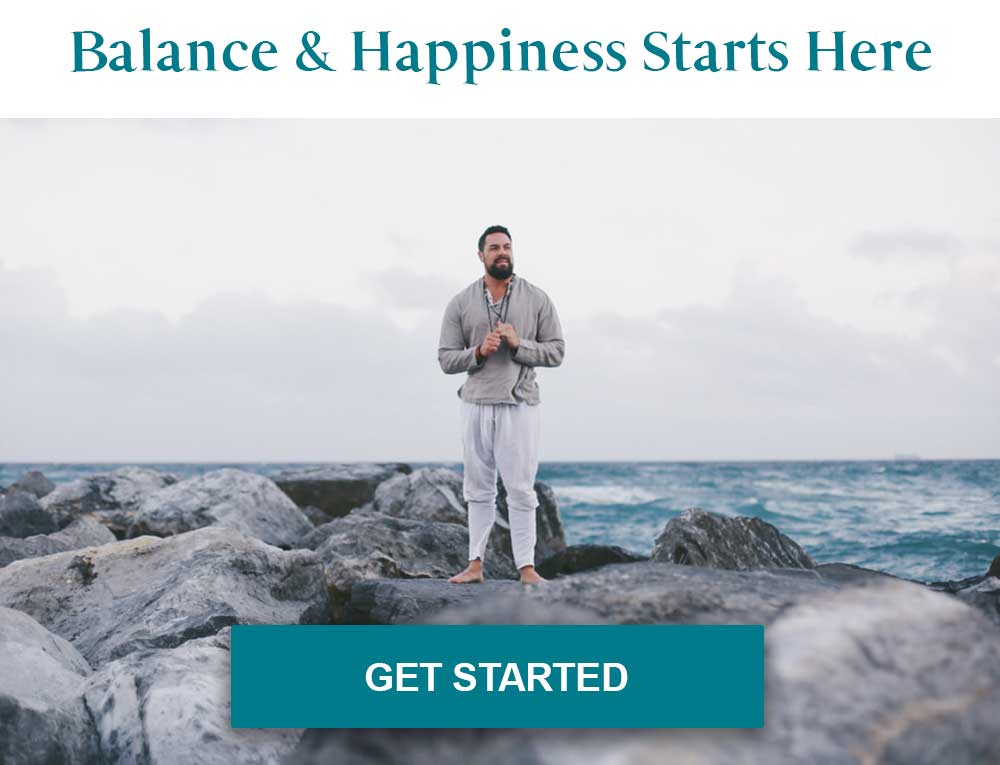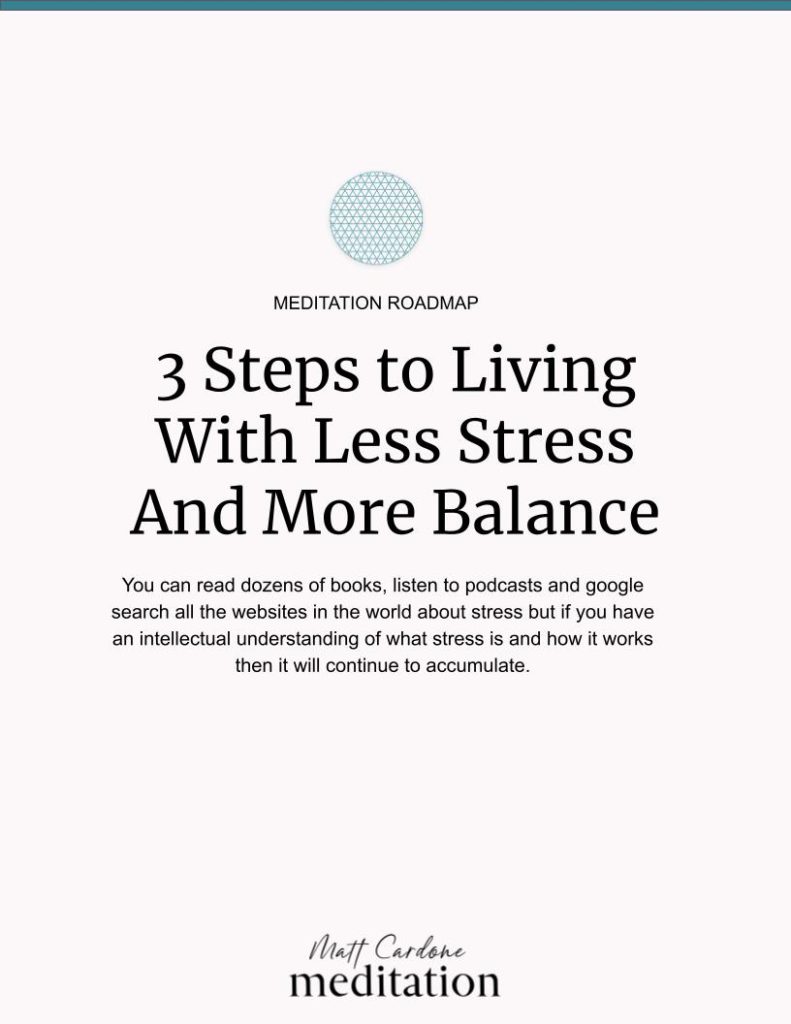Myth Three: I don’t have time to meditate.
We make time for things that are important. These things fall into two categories; activities we want to do and activities we need to do. Meditation applies to both categories, and as it becomes habitual, it no longer appears to be taking time from other activities. The idea of meditation has changed for me over the years. At first, I found it difficult to sit for even a very short period of time. I knew meditation was good for the mind, body and spirit, but I didn’t necessarily enjoy it when I was “dabbling.” And when I say “dabbling,” it varied from a few times a week to a few times a year. In reality, I was doing the best I knew how but I did not have a foundation to build on. It was like trying to figure out how to swim after being dropped in to the vastness of the open water ocean.
My lukewarm approach to meditation changed when I learned the simple techniques behind Vedic Meditation, a practice whose use is backed up by hundreds of scientific studies. My practice went from something I “had to do,” to something I “got to do.” This shift in mentality made all the difference, with the fruits of my meditation appearing in the first weeks of persistent practice. Events that use to upset me no longer controlled me, and I developed a new level of introspection. I was now able to sit with myself, alone, in a quiet room, and not feel the urgent need to do something. For me, that was huge.
Myth Four: I can meditate while doing other things.
Now that we’ve covered some primary misconceptions surrounding meditation, I’d like to turn to a question I’m often asked. “Can I meditate while doing other things, like exercising?” The short answer is, no. When we partake in high intensity physical activity the body utilizes the sympathetic nervous system (fight or flight response). The brain then induces a release of chemicals (e.g. cortisol or adrenaline) indicative of what would have been needed to survive a prehistoric altercation. With the sympathetic nervous system on high alert, or body is unable to alleviate stressors using the parasympathetic nervous system. This precludes proper meditative practice from taking place.
Beyond exercise, there are a couple other things to avoid before meditation. With meditation, we are in the business of de-exciting mind and body. This can’t happen anytime we ingest food or have an intake of caffeine. These catalysts light up our body’s mechanisms, blocking an enjoyable meditative experience. When both mind and body start to de-excite the body can then go into a deep state of profound rest. This is critical as approximately 90 percent of our body’s repair occurs during rest states.
Meditation does not have to be boring, something you struggle through or something you are afraid of doing. In fact, meditation should be none of that. There is a technique it which it can be easy, effortless, beneficial and quite enjoyable.
Biography
In February of 2014, I was ranked number one in the nation for a Fortune 500 company’s sales division. Two weeks before our national meeting I totaled the company car crashing into a telephone pole at 50mph. Three days later, I was arrested for DUI in a rental car the company had provided for me. I was bare-chested, in gym shorts and house slippers. Soon after, I received a call from the Vice President and HR agent relinquishing me from my position within the company. That wasn’t enough for me to stop. I kept using, and in May of 2014, woke up in a treatment center after an overdose.
Learning about myself was an inside job and would start with a psychic overhaul via a 12-step program. One of the foundational steps in continuing spiritual growth is the daily practice of prayer and meditation. My early attempts at meditation were weak, at best, until I heard what I needed at a Santa Monica AA meeting. I can still remember it, “If you are not meditating, then you are not working the 12-steps.” The meditation I learned is a practice of when the mind and body silently experience a mantra and settle down. It takes the mind beyond thought to its most settled state while maintaining full alertness, a state of inner contentedness.
For several years now I have been implementing the effortless practice of Vedic Meditation and, as a result, both my personal and professional lives have completely transformed. Having traveled to India frequently to study under some of the greatest masters of our time, I have accumulated thousands of hours of meditative reprieve. I now teach regularly throughout the United States, implementing Vedic Meditation in corporate environments, recovery communities, and meditation workshops.
Join Me for an Intro to Vedic Meditation
Myth Three: I don’t have time to meditate.
We make time for things that are important. These things fall into two categories; activities we want to do and activities we need to do. Meditation applies to both categories, and as it becomes habitual, it no longer appears to be taking time from other activities. The idea of meditation has changed for me over the years. At first, I found it difficult to sit for even a very short period of time. I knew meditation was good for the mind, body and spirit, but I didn’t necessarily enjoy it when I was “dabbling.” And when I say “dabbling,” it varied from a few times a week to a few times a year. In reality, I was doing the best I knew how but I did not have a foundation to build on. It was like trying to figure out how to swim after being dropped in to the vastness of the open water ocean.
My lukewarm approach to meditation changed when I learned the simple techniques behind Vedic Meditation, a practice whose use is backed up by hundreds of scientific studies. My practice went from something I “had to do,” to something I “got to do.” This shift in mentality made all the difference, with the fruits of my meditation appearing in the first weeks of persistent practice. Events that use to upset me no longer controlled me, and I developed a new level of introspection. I was now able to sit with myself, alone, in a quiet room, and not feel the urgent need to do something. For me, that was huge.
Myth Four: I can meditate while doing other things.
Now that we’ve covered some primary misconceptions surrounding meditation, I’d like to turn to a question I’m often asked. “Can I meditate while doing other things, like exercising?” The short answer is, no. When we partake in high intensity physical activity the body utilizes the sympathetic nervous system (fight or flight response). The brain then induces a release of chemicals (e.g. cortisol or adrenaline) indicative of what would have been needed to survive a prehistoric altercation. With the sympathetic nervous system on high alert, or body is unable to alleviate stressors using the parasympathetic nervous system. This precludes proper meditative practice from taking place.
Beyond exercise, there are a couple other things to avoid before meditation. With meditation, we are in the business of de-exciting mind and body. This can’t happen anytime we ingest food or have an intake of caffeine. These catalysts light up our body’s mechanisms, blocking an enjoyable meditative experience. When both mind and body start to de-excite the body can then go into a deep state of profound rest. This is critical as approximately 90 percent of our body’s repair occurs during rest states.
Meditation does not have to be boring, something you struggle through or something you are afraid of doing. In fact, meditation should be none of that. There is a technique it which it can be easy, effortless, beneficial and quite enjoyable.
Biography
In February of 2014, I was ranked number one in the nation for a Fortune 500 company’s sales division. Two weeks before our national meeting I totaled the company car crashing into a telephone pole at 50mph. Three days later, I was arrested for DUI in a rental car the company had provided for me. I was bare-chested, in gym shorts and house slippers. Soon after, I received a call from the Vice President and HR agent relinquishing me from my position within the company. That wasn’t enough for me to stop. I kept using, and in May of 2014, woke up in a treatment center after an overdose.
Learning about myself was an inside job and would start with a psychic overhaul via a 12-step program. One of the foundational steps in continuing spiritual growth is the daily practice of prayer and meditation. My early attempts at meditation were weak, at best, until I heard what I needed at a Santa Monica AA meeting. I can still remember it, “If you are not meditating, then you are not working the 12-steps.” The meditation I learned is a practice of when the mind and body silently experience a mantra and settle down. It takes the mind beyond thought to its most settled state while maintaining full alertness, a state of inner contentedness.
For several years now I have been implementing the effortless practice of Vedic Meditation and, as a result, both my personal and professional lives have completely transformed. Having traveled to India frequently to study under some of the greatest masters of our time, I have accumulated thousands of hours of meditative reprieve. I now teach regularly throughout the United States, implementing Vedic Meditation in corporate environments, recovery communities, and meditation workshops.







